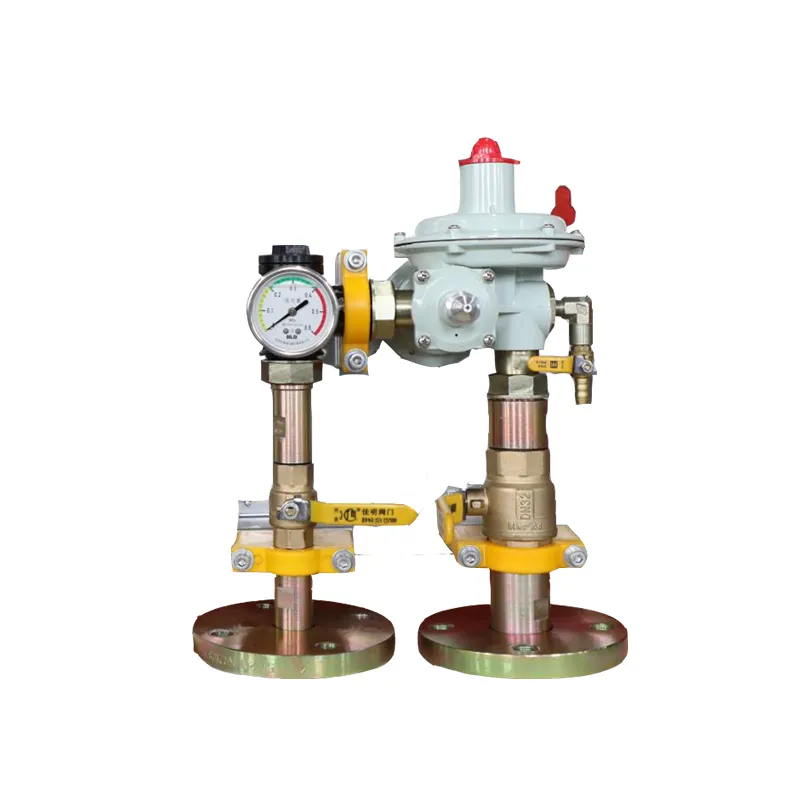
11 月 . 02, 2024 13:35
Back to list
محطة تخفيض ضغط الغاز الطبيعي
Natural Gas Pressure Reduction Station An Overview
A Natural Gas Pressure Reduction Station (NGPRS) plays a crucial role in the natural gas supply chain, ensuring that gas is safely and efficiently delivered from high-pressure transmission pipelines to low-pressure distribution networks. This process is essential for the safe use of natural gas in residential, industrial, and commercial applications.
Function and Importance
The primary purpose of a pressure reduction station is to reduce the pressure of natural gas from transmission levels, which can range from 200 to 1,500 psi (pounds per square inch), to a lower, more manageable level, typically between 5 and 60 psi, suitable for distribution systems. This reduction is vital because the high pressures in transmission pipelines are necessary to transport gas over long distances but are too dangerous and unsuitable for direct consumer use.
NGPRS are strategically located near the transition points from high-pressure pipelines to local distribution networks. Their location ensures minimal energy loss and maximum safety during the transfer process.
Components of a Pressure Reduction Station
.
1. Pressure Regulators These are devices that automatically reduce and control the pressure of the incoming gas, ensuring it meets the required levels for further distribution.
محطة تخفيض ضغط الغاز الطبيعي

2. Filtration Systems These systems clean the gas by removing impurities and debris, ensuring the safety and efficiency of the pipeline systems.
3. Safety Devices Pressure relief valves and other safety mechanisms are integrated into the system to prevent over-pressure situations, which could pose significant dangers.
4. Flow Measurement Instruments These instruments help monitor the flow and pressure of the gas, providing data necessary for operational adjustments and safety monitoring.
Safety and Environmental Considerations
Given the nature of natural gas as a combustible material, safety is a paramount concern. NGPRS are equipped with advanced monitoring systems to detect leaks and other anomalies. Regular maintenance and inspections are critical to ensuring that all components operate effectively and safely.
Moreover, environmental considerations are increasingly influencing the design and operation of pressure reduction stations. Efforts are being made to reduce emissions and minimize the environmental footprint of these facilities. Enhanced technologies and protocols help maintain compliance with local and international regulations regarding emissions and safety.
Conclusion
Natural Gas Pressure Reduction Stations are vital components of the natural gas infrastructure. They not only facilitate the safe delivery of gas to consumers but also play a significant role in the overall efficiency and reliability of gas supply systems. As global energy demands continue to grow and the shift towards cleaner energy sources intensifies, the role of NGPRS will be even more critical in the sustainable management of natural gas resources. Understanding their function and significance is essential for anyone engaged in energy planning and infrastructure development.
Next:
Latest news
-
Unlocking The Quality Gas Pressure ReducersNewsNov.01,2024
-
The Role of Gas Pressure Reducing StationsNewsNov.01,2024
-
The Importance and Functionality of Safety Relief ValvesNewsNov.01,2024
-
The Essential Role of Safety Valves in Natural Gas ApplicationsNewsNov.01,2024
-
The Essential Role of Gas Pressure RegulatorsNewsNov.01,2024
-
Enhance Your Premium Gas FiltersNewsNov.01,2024

